A modern-day malady: "Upper Crossed Syndrome"

Is moving forward inevitably a sign of progress? Not in the postural sense. For the past two decades, with the advent of cell phones, laptops, and social media, our bodies are literally being thrust forward, causing a litany of postural distortions and injuries. The technical term for this modern-day misalignment is the "Upper Crossed Syndrome." (UCS).
The southern companion to this disorder is called (naturally) "Lower Crossed Syndrome." (LCS). I've written about this in an earlier article. You can find it here:
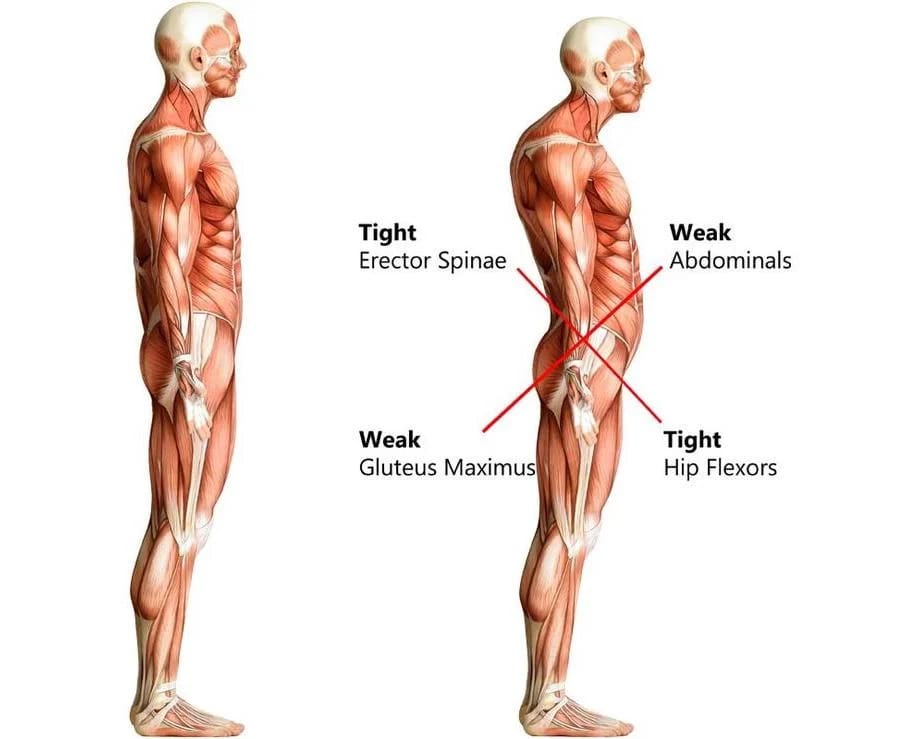
LCS is most often a result of extended sitting. UCS primarily affects the upper back, shoulders, and neck area. In addition to being glued to our cell phones, other factors that exacerbate the condition include driving, reading, and sports such as cycling and skiing. The symptoms are immediately apparent, as in the picture above. The head juts forward, similar to a crane. The shoulder complex is rounded and stooped. It's as visually unappealing as it is ubiquitous.
From a structural standpoint, when UCS is present, some muscles become weakened, and other muscles become too tight. Look at the diagram below:
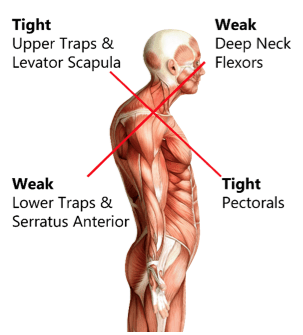
The tight muscles of the "X" include the upper traps (located at the connection of the neck, back, and shoulders), the levator scapula (running from the back along the neck) and the pectoral (chest) muscles. The corresponding weak muscles are the deep neck flexors, lower traps, and serratus anterior (running from the shoulder along the side of the chest.)
Some of the symptoms include headaches, jaw pains, neck pain, lack of flexibility in the shoulders, and tingling or numbness in the arms.
Below are some exercises and stretches to help mitigate some of the manifestations of Upper Cross Syndrome. But, before we get into it, my usual caveat:
Exercise disclaimer: please be cautious when performing these exercises. If you have any pre-existing injuries, please consult a licensed professional before attempting. Be careful when operating under the "no pain ... no gain" mantra. The people that carelessly follow that mantra often end up with too much of the former and not enough of the latter.
1) The pull-back arm clasp stretch. Somewhere, there must be a more glamorous, dignified name for this stretch. But, in all fairness, it's a pretty mundane stretch, so perhaps the name is fitting. It's also really intuitive: if we spend all of our time thrust forward, we have to counter that with a movement that pulls us backward. Enter the PBACS. It looks like the picture below:
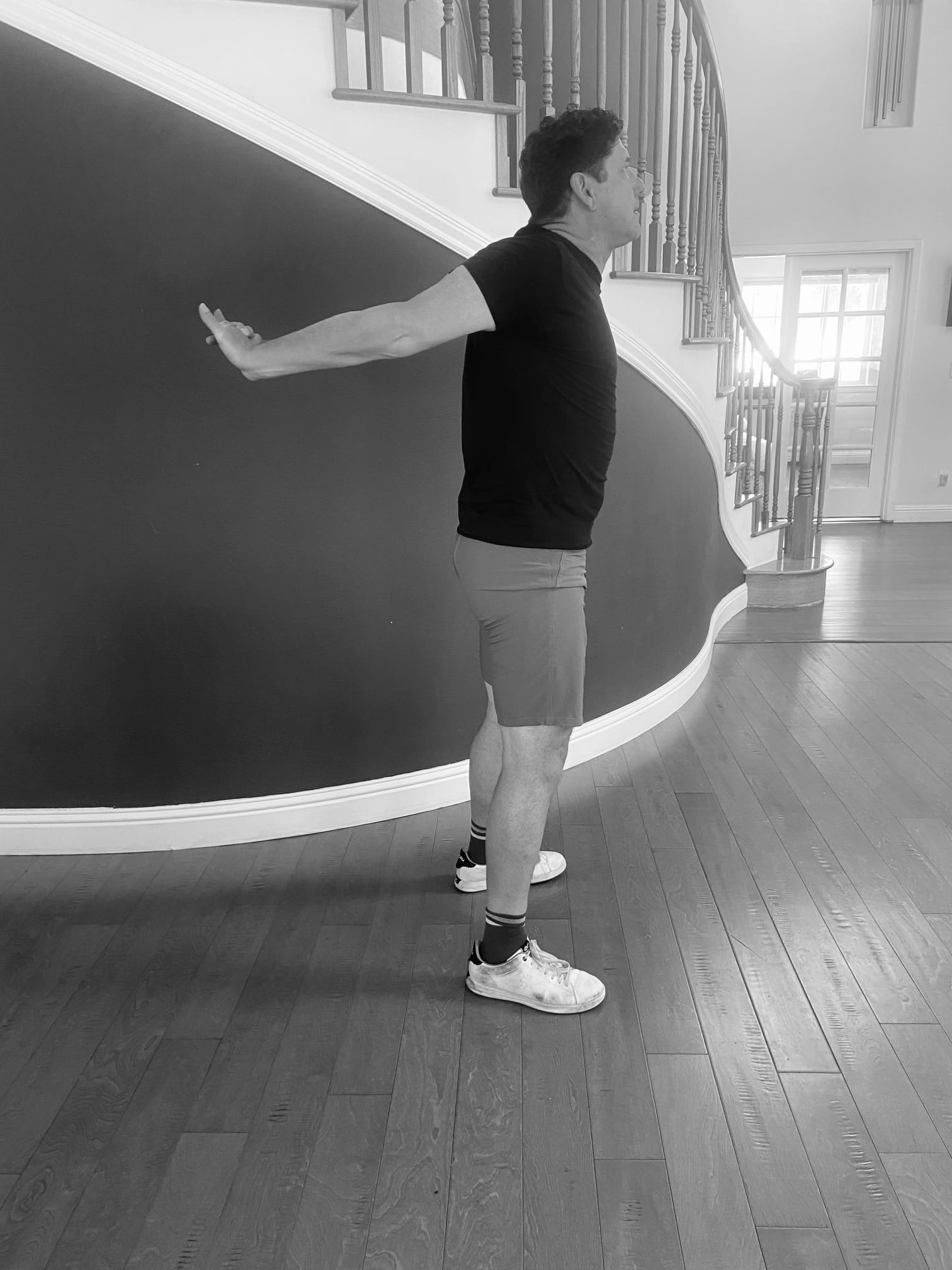
Make sure to keep your head and back straight. Clasp your hands behind your back (if you can) and raise them as high as possible until you feel pain or discomfort. Do not go past that point. If you can't clasp your hands together (and many people can't due to shoulder impingement and UCS) get them as close together as you can without discomfort. Hold for 20 seconds and increase in 20-second increments. Aim for 1 minute 3-4 times per day.
2) The Squat and Reach. This is one of my favorite exercises to do with clients. I do this almost every session. The benefit of this exercise is that it not only targets areas impacted by UCS (shoulder complex, pecs, lats, and serratus anterior) but it also targets muscles weakened from extended sitting such as the hip flexors and adductors. It's one of the best "bang for your bucks" exercises out there.
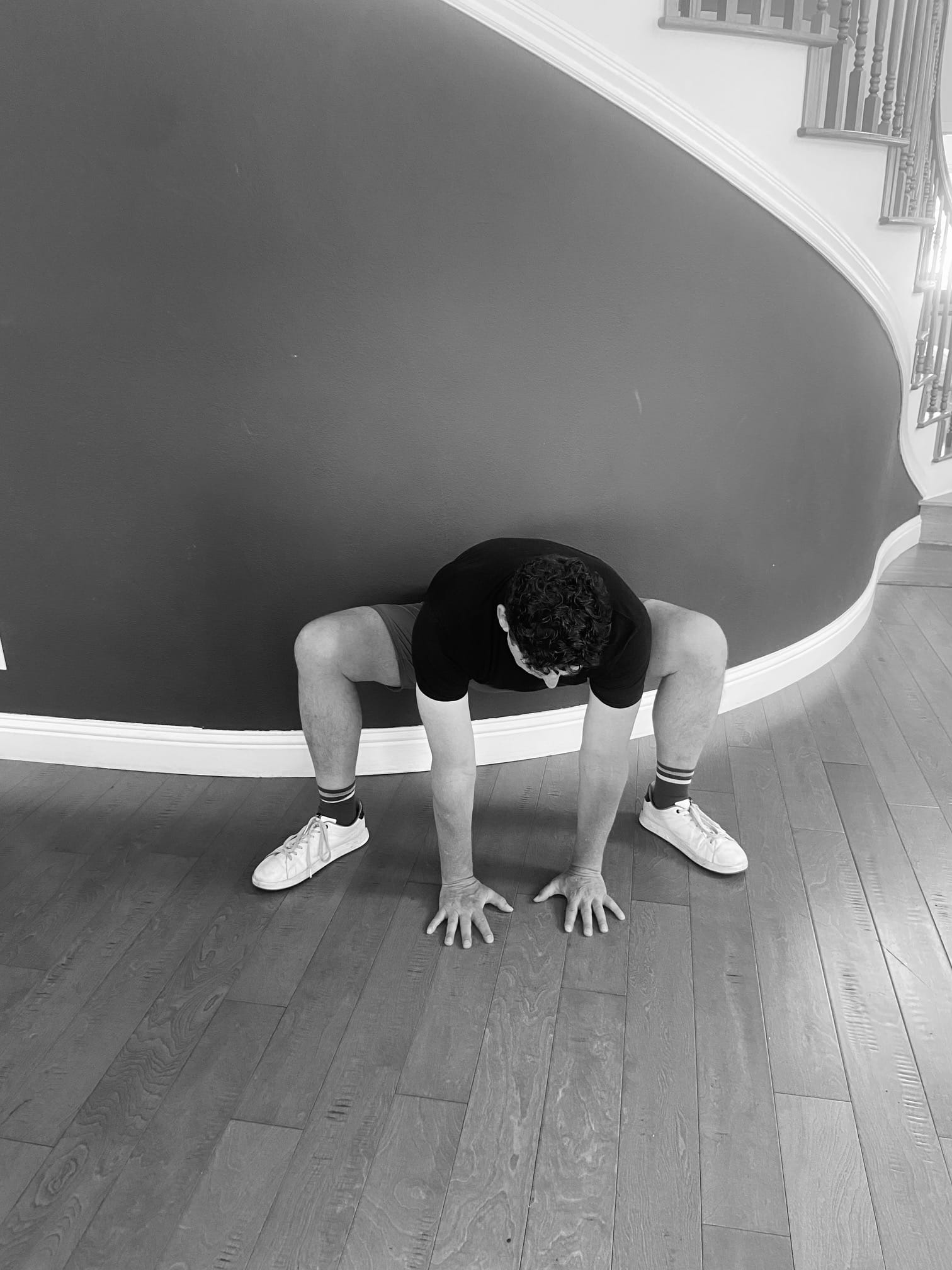
Start by going into a deep squat with your feet spread wide, and turned slightly outward. Place both palms flat on the ground, as above.
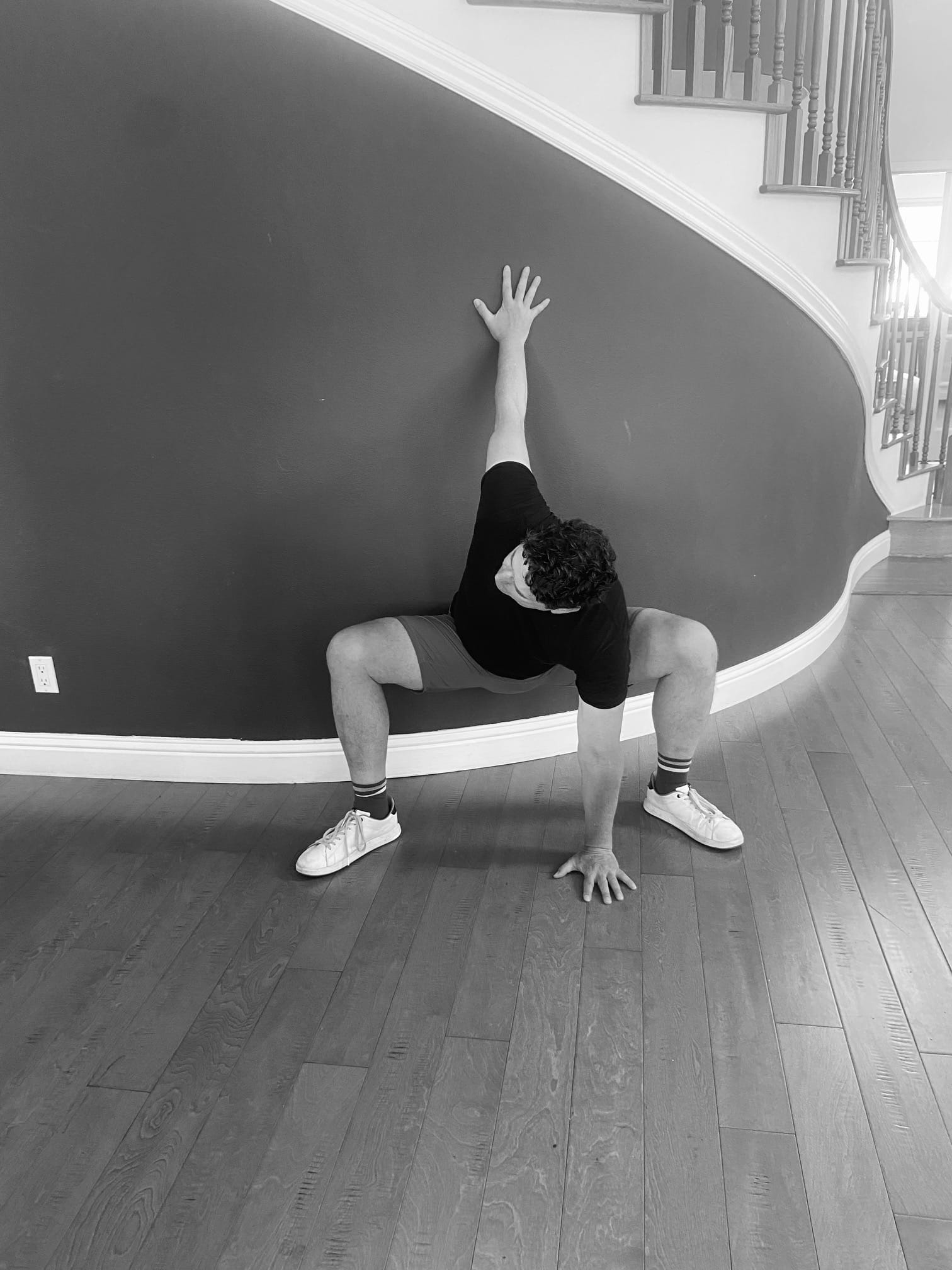
Next, while keeping one palm flat on the ground, reach around with the other arm and touch the wall behind you. If you can't fully touch the wall without discomfort, come as close as you can without going past your pain threshold. Try for 20 at first, and increase in increments of 20. My clients do a set of 100 during the sessions. That's a great goal.
3) The bodyweight Superman/row. This is an exercise standard. But just because it's popular doesn't mean it's easy. In fact, due to how widespread UCS is, it's actually quite difficult. For people with tight shoulder complexes (i.e. almost everyone who works in an office environment or owns a cell phone) and weak cervical flexors, it's quite challenging. Kind of like "kryptonite." (Trainer humor...I'll be here all week, folks.)
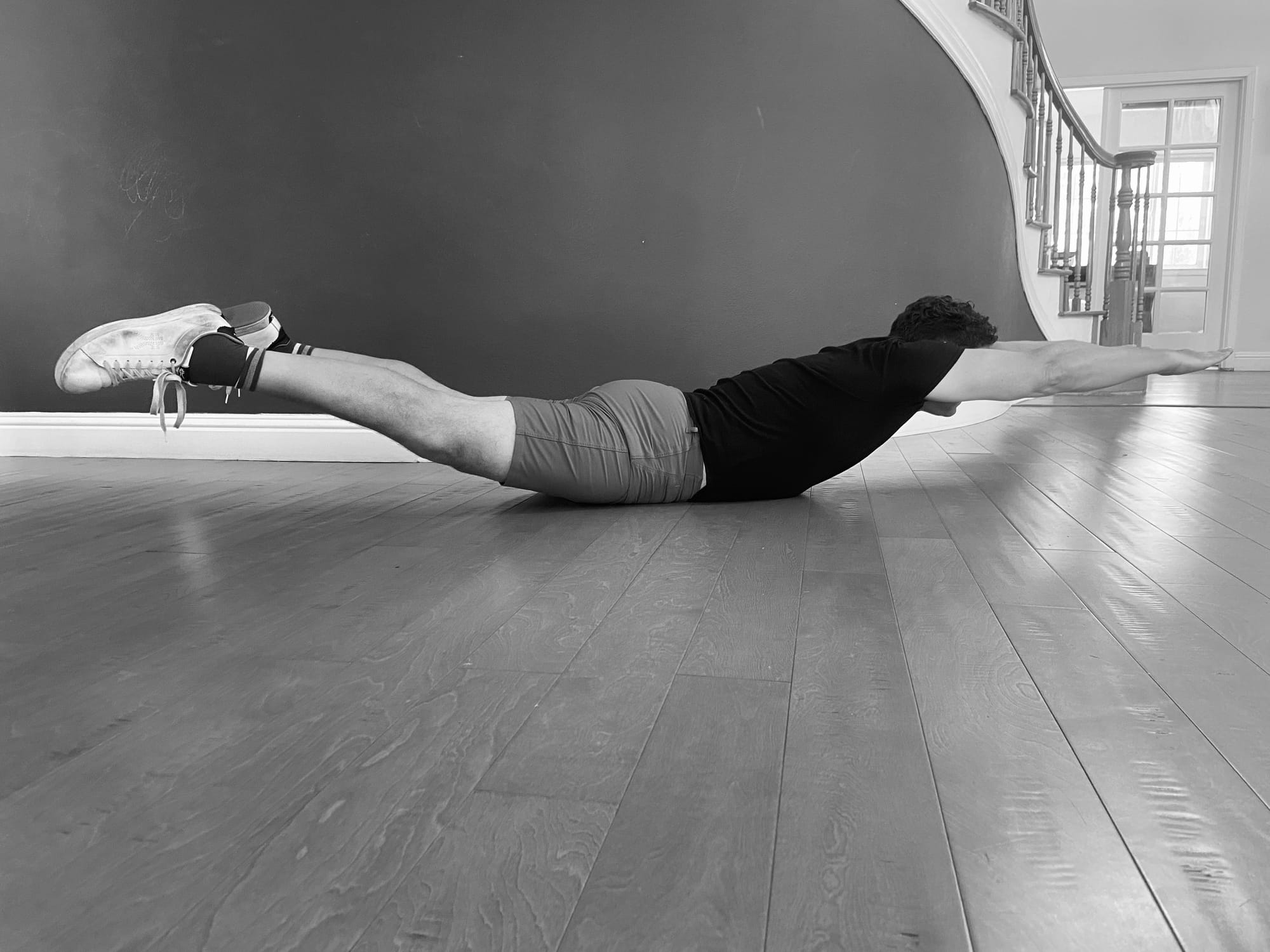
To do this exercise, lie flat on the ground, and then bring both feet and knees off the ground, keeping them straight. Raise your arms as high above your head as they can go without being too painful. For most people, that won't be very high. Keep your arms straight, and don't bend your elbows. The trick to this exercise is to tighten your butt and abs. They provide the fulcrum that allows you to stabilize yourself. Try holding for twenty seconds.
And then take your arms back out behind you, again keeping them straight. This really engages the upper back muscles and trapezius complex. Once again, focus on your butt and abs. Hold for twenty seconds. Try to increase in 20-second increments. A full minute with arms straight out and a full minute with arms extended back is ideal.
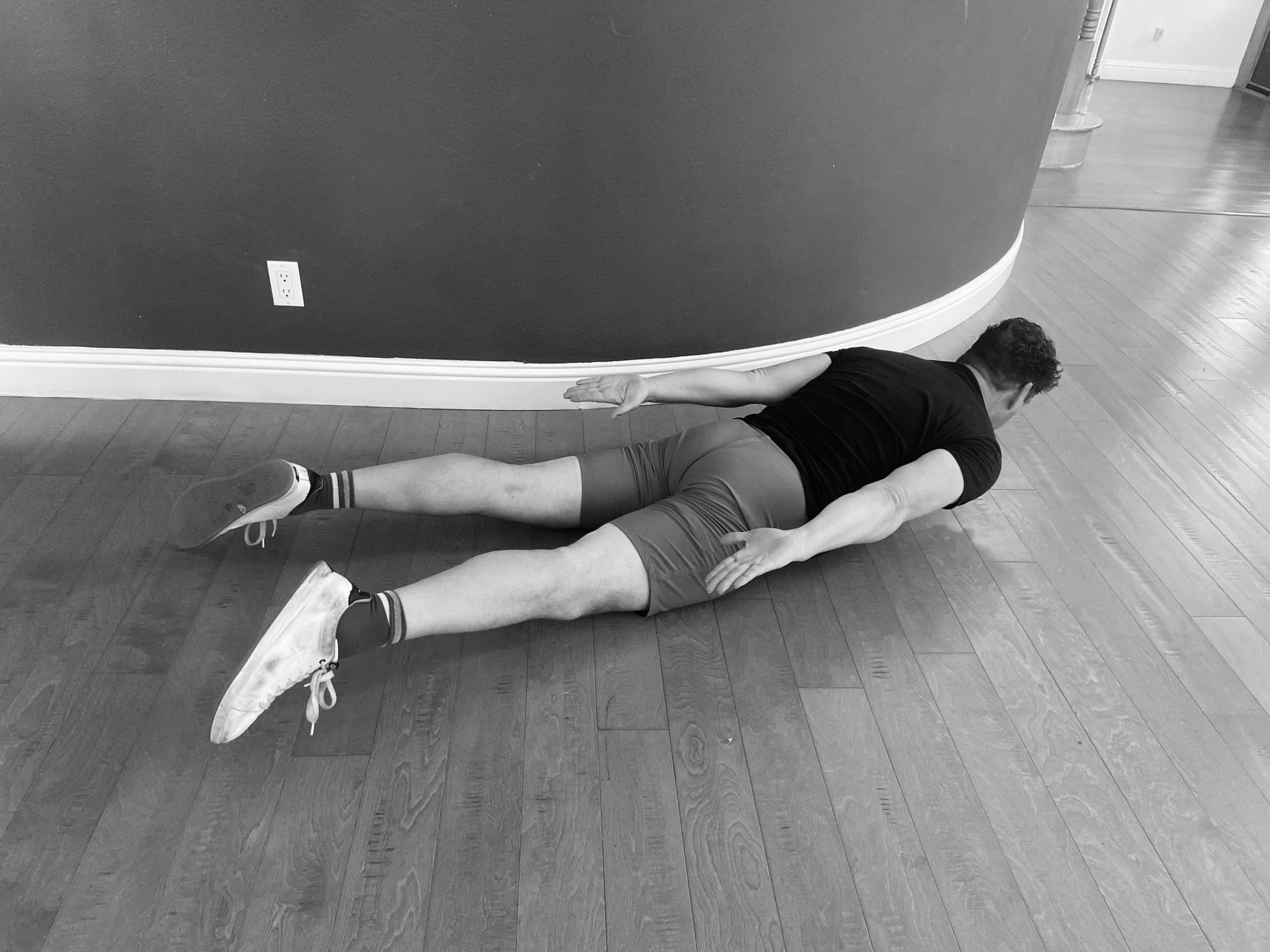
4) Superman/Row with weights. If the "Superman" is proving to be too mundane, then up the ante and add some free weights. I would really caution against using weights that are too heavy. This isn't the time to set a PR on the bench press. Most people have a hard time extending their arms out straight without any weight — so proceed with caution. I use three-pound weights (pictured), and I think that's plenty.
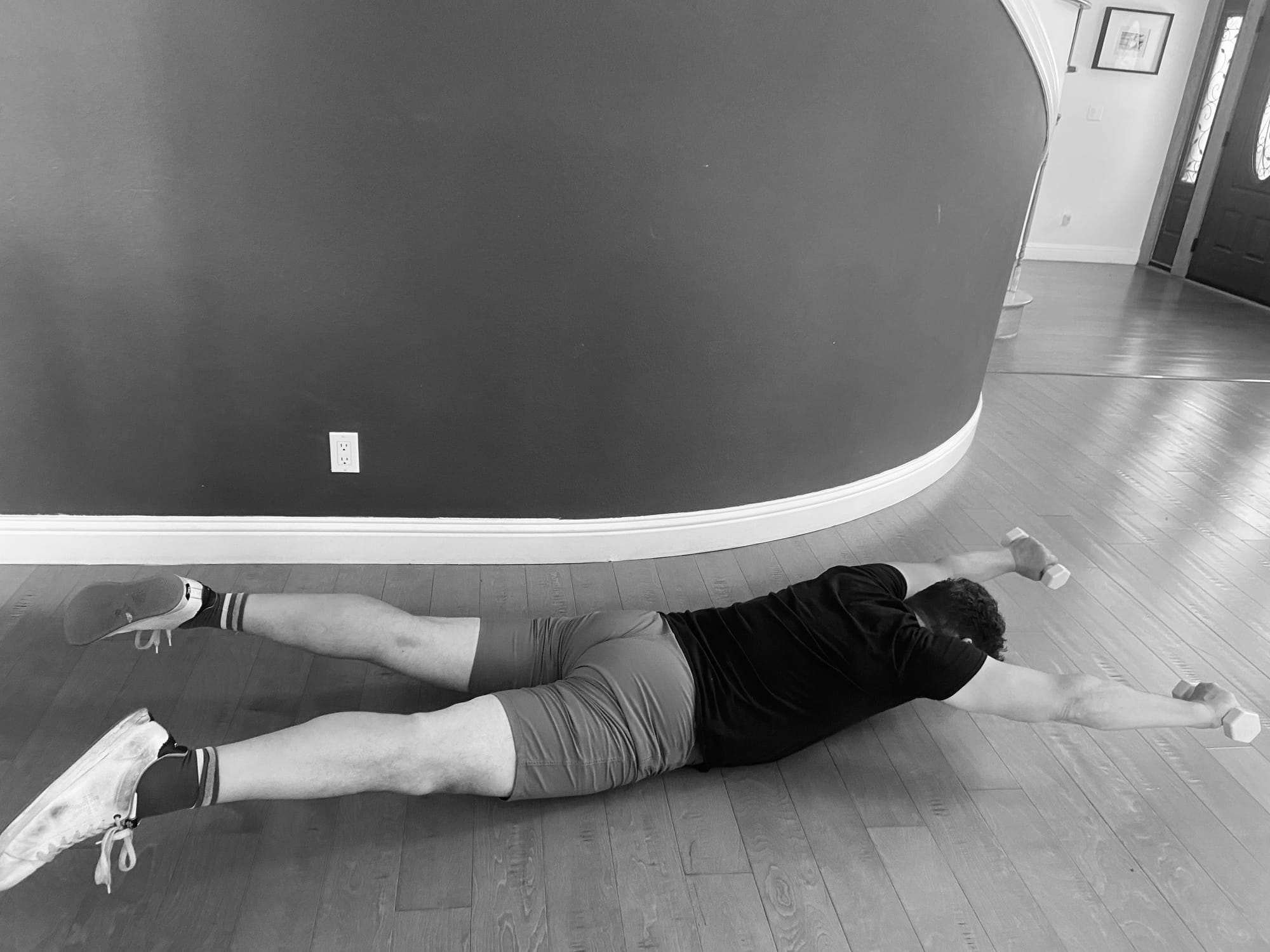
Once again, focus on your butt and abs. Extend both knees and arms out straight. Hold for a twenty-second count and gradually work your way up to a minute. Do the same with the "row" as pictured below:
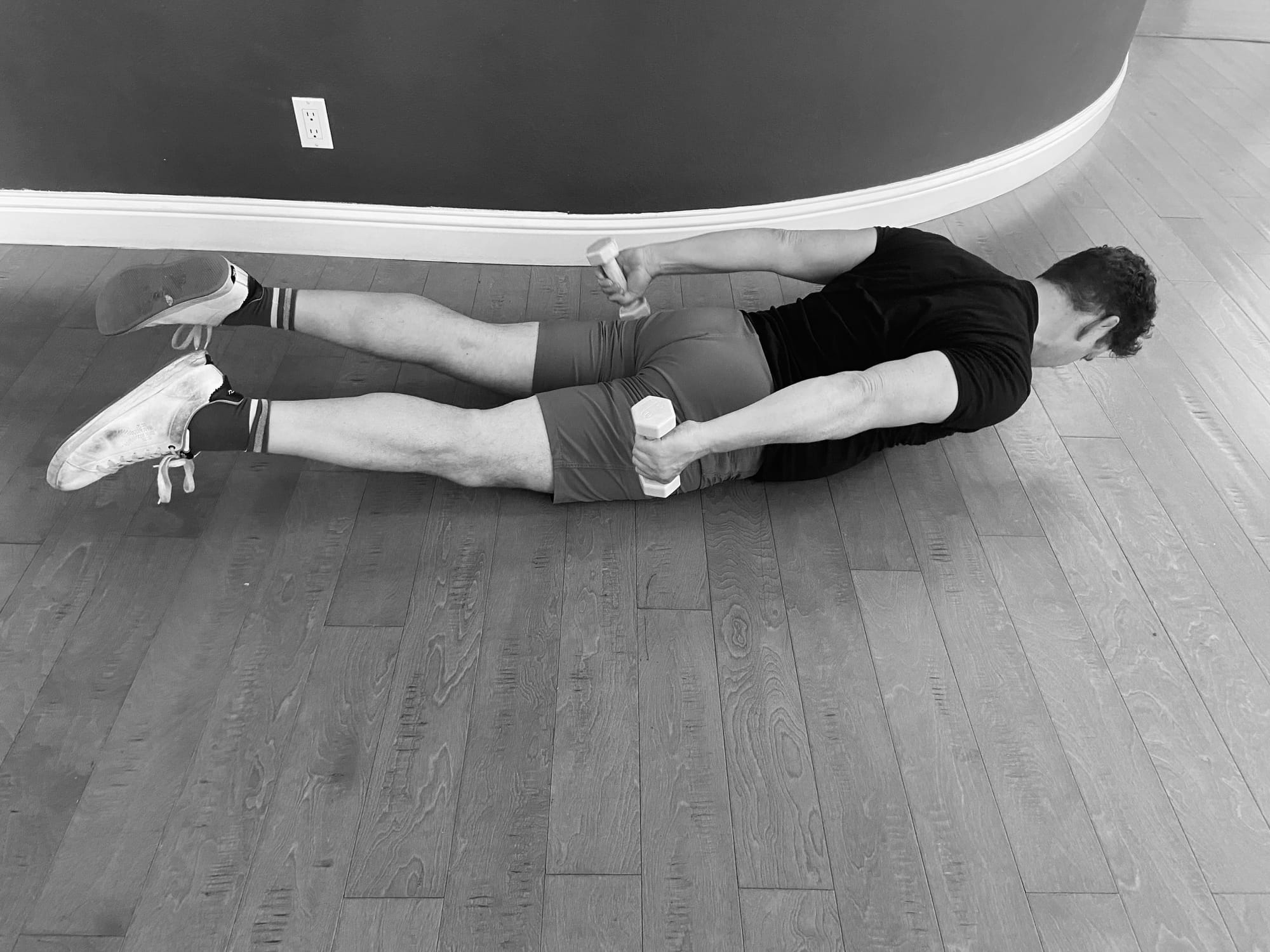
In closing, I'll note one of the ironies of my profession. Many people are focused on the Holy Grails of fitness — fat loss and muscle gain. That's perfectly understandable; they're goals many people find desirable and aesthetically pleasing. However, an obsessive focus on these two traits can result in some "fitness myopia." A person can be "thin" or "buffed," but if they walk around all day long with stooped shoulders, an extended neck, or a perpetually curved back, are they really projecting an image of health and fitness?
It's worth thinking about. These exercises can help.
Joshua Brandt is an Oakland based personal trainer. He can be reached at joshua@joshuabrandtpt.com or (415) 412-7339.
If you enjoyed reading this article, please pass it along!
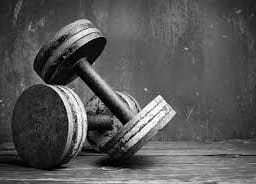
Member discussion